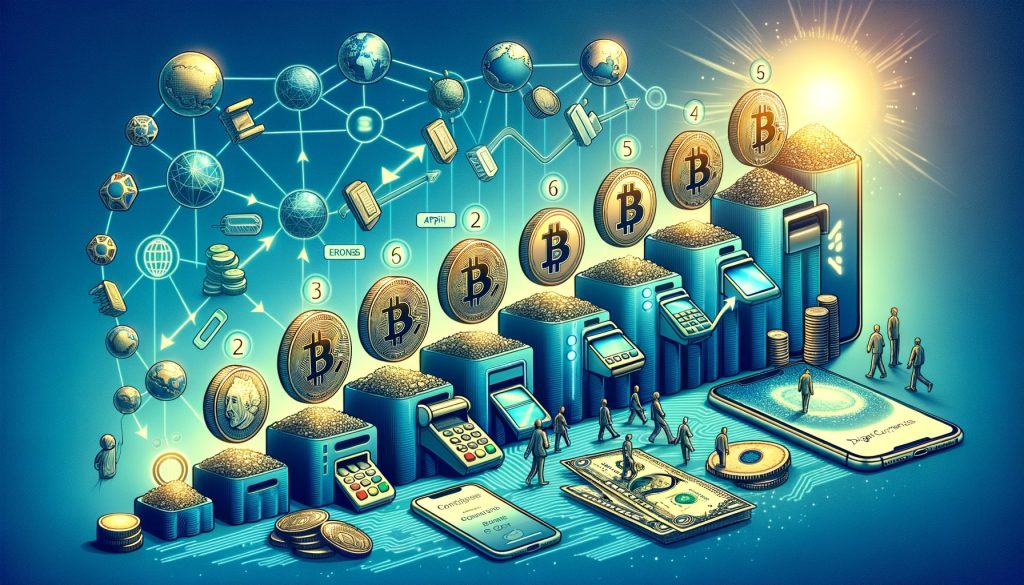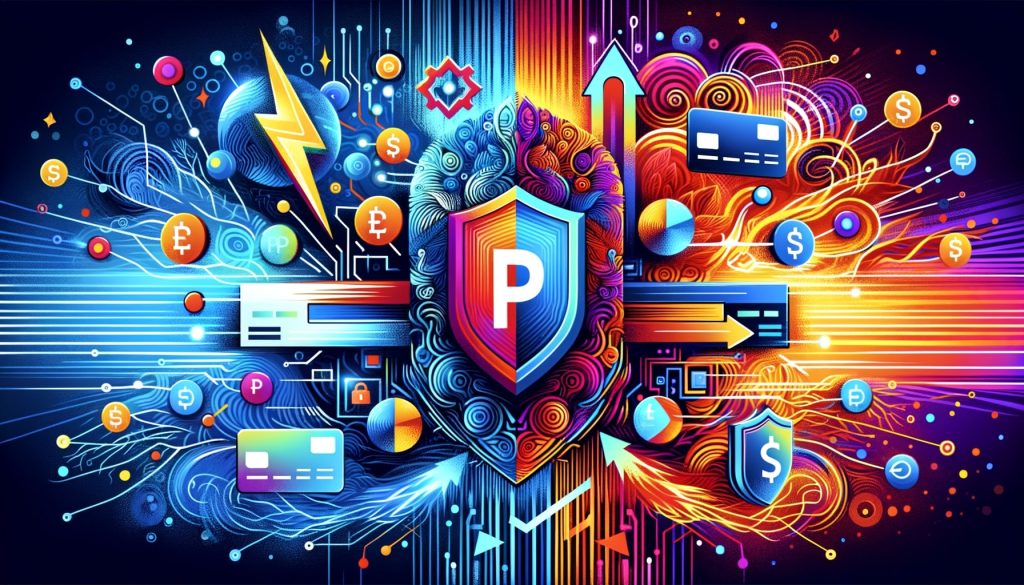
By dev October 18, 2024
In the digital era, the way people transfer money has undergone a significant transformation. Among the most popular modern payment methods is Peer-to-Peer (P2P) payment systems. P2P payments allow individuals to send money to each other quickly and easily, often without the need for a bank or intermediary. Whether splitting a restaurant bill, paying a friend for concert tickets, or sending rent to a roommate, P2P payments offer a fast, convenient, and often cost-effective solution.
This article will explore the concept of P2P payments, how they work, the various platforms available, their benefits and drawbacks, security considerations, and their growing role in the financial landscape. We will also examine the technological advancements that power P2P payments and answer common questions about this popular method of transferring money.
What Are P2P Payments?
Peer-to-Peer (P2P) payments, also known as person-to-person payments, refer to the process of transferring funds directly between two individuals using a digital or mobile platform. These payments are typically facilitated by apps, websites, or financial institutions and allow users to send money from one bank account to another without needing to write checks, use cash, or visit a bank.
P2P payments rely on the internet and mobile technology to transfer money between accounts, often in real-time or within a few hours. These payments can be used for a variety of purposes, including reimbursing friends, paying bills, or making small transactions.
The Evolution of P2P Payments: From Cash to Digital Transactions

P2P payments have come a long way from the days of exchanging cash or writing checks. With the advent of technology and the rise of smartphones, digital transactions have become the norm. The evolution of P2P payments can be traced back to the emergence of online banking and the introduction of services like PayPal in the late 1990s. These platforms allowed users to transfer money electronically, but they were limited to online transactions.
The real breakthrough in P2P payments came with the rise of mobile payment apps such as Venmo, Zelle, and Cash App. These apps revolutionized the way people send and receive money by enabling seamless transactions through smartphones. Today, P2P payments have become an integral part of our daily lives, with millions of users relying on them for various purposes, from splitting bills to paying rent.
How P2P Payments Work: A Step-by-Step Guide
To understand how P2P payments work, let’s take a step-by-step look at the process:
- Sign up: Users need to create an account on a P2P payment platform of their choice. This typically involves providing personal information and linking a bank account or credit card.
- Add contacts: Users can add their contacts or friends who are also on the same P2P payment platform. This allows for easy and quick transactions between individuals.
- Initiate a payment: To send money, users need to enter the recipient’s information, such as their username, email address, or phone number. They also specify the amount to be transferred.
- Verify and confirm: Before completing the transaction, users are usually prompted to review the details and confirm the payment. Some platforms may require additional security measures, such as a PIN or biometric authentication.
- Funds transfer: Once the payment is confirmed, the funds are transferred from the sender’s account to the recipient’s account. This process typically takes a few seconds to a few minutes, depending on the platform and the banks involved.
- Notification: Both the sender and the recipient receive a notification confirming the successful transaction. This provides transparency and ensures that both parties are aware of the transfer.
Exploring Different P2P Payment Platforms: Features and Benefits

There are several P2P payment platforms available in the market, each with its own unique features and benefits. Let’s explore some of the most popular platforms:
PayPal
PayPal is one of the most well-known P2P payment platforms globally. Established in 1998, PayPal allows users to send and receive money domestically and internationally. It offers a range of services beyond P2P payments, including online purchases and invoicing.
Key Features of PayPal
- Wide Availability: PayPal operates in over 200 countries.
- Security: PayPal is known for its high level of security, offering buyer and seller protection.
- Transaction Fees: PayPal charges fees for transactions involving credit cards or international transfers.
Venmo
Venmo, owned by PayPal, is a mobile-first P2P payment app that has gained significant popularity in the United States, especially among younger users. Venmo combines social features with payments, allowing users to share the reason for the transaction in a social feed.
Key Features of Venmo
- Instant Transfers: Users can send money in real-time.
- Social Integration: Venmo allows users to add notes and emojis to transactions, making it feel like a social platform.
- Low Fees: Venmo is generally free to use unless funding the payment with a credit card.
Zelle
Zelle is a P2P payment service integrated with many U.S. banks. It allows users to send money directly from their bank accounts to another person’s account without the need for a third-party app.
Key Features of Zelle
- Bank Integration: Zelle is built into the online banking apps of many U.S. banks, allowing seamless transfers.
- No Fees: Zelle does not charge fees for transfers.
- Instant Transfer: Payments are typically received within minutes if both users have Zelle accounts.
Cash App
Cash App, developed by Square, is another popular P2P platform that allows users to send and receive money, invest in stocks, and even buy and sell Bitcoin.
Key Features of Cash App
- Multi-Functionality: Users can send money, invest, and trade Bitcoin on the same platform.
- Cash Card: Cash App offers a debit card that users can use to spend their balance at any retailer.
- Simple Interface: Cash App is designed with a simple, user-friendly interface.
Security Measures in P2P Payments: Ensuring Safe Transactions

As with any financial transaction, security is a crucial aspect of P2P payments. To ensure safe transactions, P2P payment platforms employ various security measures. Here are some common security features:
- Encryption: P2P payment platforms use encryption technology to protect users’ personal and financial information. This ensures that data transmitted between users and the platform remains secure and cannot be intercepted by unauthorized parties.
- Two-factor authentication: Many P2P payment apps offer two-factor authentication, requiring users to provide an additional verification method, such as a unique code sent to their mobile device, in addition to their password. This adds an extra layer of security to prevent unauthorized access.
- Fraud monitoring: P2P payment platforms employ sophisticated fraud detection systems to monitor transactions for any suspicious activity. Unusual patterns or large transfers may trigger alerts, prompting further verification or investigation.
- Buyer and seller protection: Some P2P payment platforms offer buyer and seller protection policies to safeguard users against fraudulent transactions. These policies may include dispute resolution processes and reimbursement for unauthorized transactions.
Advantages of P2P Payments: Convenience, Speed, and Accessibility
P2P payments offer several advantages over traditional payment methods. Here are some key benefits:
- Convenience: P2P payments eliminate the need for cash or checks, making transactions quick and hassle-free. Users can send and receive money anytime, anywhere, using just their smartphones.
- Speed: P2P payments are typically processed within minutes, allowing for instant access to funds. This is especially useful in urgent situations or when splitting bills with friends.
- Accessibility: P2P payment platforms are widely available and accessible to anyone with a smartphone and a bank account. This makes it easy for individuals to participate in the digital economy, even without a traditional banking relationship.
- Splitting expenses: P2P payments make it easy to split expenses among friends or roommates. Users can divide bills for meals, rent, or utilities, and settle the amounts instantly.
Potential Risks and Challenges in P2P Payments: What to Watch Out For
While P2P payments offer numerous benefits, there are also potential risks and challenges to be aware of. Here are some key considerations:
- Fraud and scams: P2P payment platforms are not immune to fraud and scams. Users should be cautious when transacting with unfamiliar individuals and avoid sharing sensitive information or making payments to unknown parties.
- Unauthorized transactions: In the event of a compromised account or unauthorized transaction, it may be challenging to recover the funds. Users should regularly monitor their accounts, enable security features, and report any suspicious activity immediately.
- Privacy concerns: P2P payment platforms collect and store users’ personal and financial information. Users should review the platform’s privacy policy and understand how their data is used and protected.
- Limited recourse: Unlike traditional banking, P2P payment platforms may have limited customer support or dispute resolution mechanisms. Users should familiarize themselves with the platform’s policies and procedures for resolving issues or disputes.
P2P Payments vs. Traditional Banking: A Comparison

P2P payments have disrupted the traditional banking landscape by offering a more convenient and accessible alternative. Here’s a comparison between P2P payments and traditional banking:
- Accessibility: P2P payments are accessible to anyone with a smartphone and a bank account, whereas traditional banking may require physical visits to branches and adherence to banking hours.
- Transaction speed: P2P payments enable instant transfers, while traditional banking may involve delays, especially for cross-border transactions or checks clearance.
- Fees: P2P payment platforms often offer free or low-cost transactions, whereas traditional banking may involve various fees, such as wire transfer fees or overdraft charges.
- Services: Traditional banking offers a wide range of financial services, such as loans, mortgages, and investment products, which may not be available on P2P payment platforms.
Frequently Asked Questions (FAQs) about P2P Payments
Q1: Are P2P payments safe?
Yes, P2P payments are generally safe, especially when using trusted platforms with encryption and two-factor authentication. However, users should always verify recipient details to avoid scams.
Q2: How long does a P2P payment take?
P2P payments are typically processed instantly or within a few minutes. However, in some cases, it can take up to a few business days, depending on the platform and funding method.
Q3: Are there fees for using P2P payments?
Most P2P platforms do not charge fees for transfers made using a linked bank account or debit card. However, transactions funded by credit cards or involving currency conversions often incur fees. Additionally, some platforms charge for instant transfers or other premium services.
Q4: Can I use P2P payments internationally?
Some P2P platforms, such as PayPal, support international payments, though they may come with higher fees for currency conversion and cross-border transfers. Other platforms, like Venmo and Zelle, are limited to domestic use and cannot be used for international payments.
Q5: What should I do if I send money to the wrong person?
If you send money to the wrong person using a P2P platform, it may be difficult to reverse the transaction. Contact the recipient and your payment platform’s customer support as soon as possible to try to resolve the issue. However, reversing the transaction is not always guaranteed.
Conclusion
P2P payments have revolutionized the way we transfer money, offering convenience, speed, and accessibility. As technology continues to advance, we can expect further innovation in the P2P payment space. The future of P2P payments holds great potential, with the integration of emerging technologies such as blockchain and digital currencies. These advancements will likely enhance security, reduce transaction costs, and further streamline the payment process.
P2P payments have already had a significant impact on the financial landscape, challenging traditional banking models and empowering individuals to take control of their finances. As more people embrace digital transactions, P2P payments will continue to grow in popularity, shaping the way we exchange money and interact with financial services. It is essential for users to stay informed about the latest developments, security measures, and best practices to make the most of P2P payments while safeguarding their financial well-being.